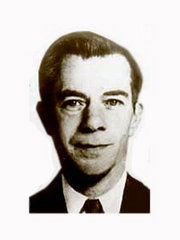In researching and writing my new book, Strategic Sales Presentations, I interviewed dozens of senior executives, read hundreds of books and articles on selling, speaking and psychology, and drew on my own thirty years of selling and speaking experience. Despite all these numbers, just four themes kept showing up again and again.
Outside-In Thinking
Think from the customer’s point of view. You are not the star of the presentation; your listeners are. When you practice outside-in thinking, you start from the premise that the quality of the reception is more important than the elegance of the transmission. To paraphrase the late Stephen Covey: Begin with the listener in mind. What do they know and not know? What do they need? How do they like to receive information?
When you follow outside-in thinking, your presentations will be more about them and their business than about your products, you will make your listeners the hero of your stories, and you will listen more even as you speak.
Are sales presentations dead? In this age of Sales 2.0, it’s easy to get that impression. We’re told that buyers are better informed than ever, that they have already gone through more than half the buying process when they first engage us, and that no one likes to be “sold”.
If this is true, then it would seem there would no longer be any need for a sales professional to know how to deliver a compelling presentation. Maybe it’s a far better use of their time to master social media instead.
On the other hand, that news would be extremely surprising to many top sales professionals who have made their year—maybe even affected the trajectory of their careers—by succeeding in those all-important strategic presentations. What does strategic mean? Quite simply, it’s improving your position (or clinching the deal) by saying the right things to the right people at the right time in the sales process. As an example, a top executive from a major technology firm told me that when a sales team from a major PR firm presented to their top management, within two seconds of their leaving the room, the president said: “Hire them.”
Sales presentations are still crucial to success in the complex sales for several reasons.
- It’s true that your buyers are getting a lot of information from the internet and other sources, and we all know that the information we get on the internet is 100% reliable, right? Whether your buyers are misinformed, or have missed some important insights, often the only way to correct the discrepancy is to gain the attention of the right people early enough in the sales process to be a part of their decision-making conversations.
- Most complex sales don’t end with a single transaction. The sales team must remain closely involved with implementation and ongoing support to ensure that the customer achieves the best possible outcomes from their purchase decision. The sales presentation may be the only way for all the people involved in the decision to get to know and gain a level of comfort with the sales team. You may represent a company that has billions of dollars in assets, but to them you are the company.
- If done right, the strategic presentation is definitely not a one-way transmission of information. It’s a superb way to have an interactive dialogue with all the relevant stakeholders and share insights that lead to better solutions.
- According to research cited in The Art of Woo: Using Strategic Persuasion to Sell Your Ideas, important corporate decisions involve an average of eight people in the decision. Major purchasing decisions will require at least that many, so at some point someone will have to present to all of them together. Why shouldn’t it be you?
- Other research by the HR Chally Group found that salesperson effectiveness accounted for 39% of the buying decisions of 300,000 customers surveyed[1]. A presentation to a high level audience is the most direct and dramatic way of demonstrating your effectiveness.
- Another interesting insight from my interviews with senior-level decision makers is that while they are often not experts in the technologies they are asked to decide upon, they do pride themselves on their ability to read people. They welcome the presentation because it gives them an opportunity to “scratch the surface” in a presentation and gauge the competence of the person presenting to them.
Willie Sutton was a famous bank robber in the 1950s. When he was caught, supposedly a reporter asked him why he robbed banks. Willie replied: “That’s where the money is.” The same still applies to strategic sales presentations today, no matter what some pundits will tell you.
As part of my research for my forthcoming book, Strategic Sales Presentations, I interviewed dozens of senior level executives to understand how they perceive the presentations they receive from salespeople. One of the questions that really got most of them talking was “What are the top mistakes that you see salespeople making during presentations?” Here are the Top 10:
Try too hard to sell me. When you reach my level, you have been vetted by people in my organization whose opinions I trust, so make your presentation educational and factual. Teach me something new.
Talk too long. “By slide #2, most salespeople have already used up 75-80% of my patience and I’m looking for the exit.” Get to the point. On a related note, don’t use too many slides, especially about your corporate “story”. Sometimes even you look bored with it.
Ask me what keeps me awake at night. That’s one of the most overused questions in sales. You should already have a pretty good idea of my problems.
Be too sure that you know all about my problem already. This is the opposite extreme of the previous one. If you act like you know it all, we will push back and expose what you don’t know. Be humble and ask a lot of questions.
Not listen. Don’t be so wrapped up in getting your message out that you don’t listen to us. If we interrupt you to ask a question or say something, there is a pretty good reason for it.
Try to circumvent our buying process. “Don’t force your sales cycle on me.” On rare occasions, we will bend this rule, but you’d better have a damn good reason to do it. Also, “If you get in too easily to see me, that’s not a good sign. It means everyone else can too.”
Be too canned. We like to talk to real people who know our business. If you’re too slick or too “coiffed”, we’ll get suspicious.
Use “$75 words”. When you make something more complicated than it is, it “makes us think like you’re full of it.” On a related note, a CFO said that you should not use terms like ROI and payback unless you really know what they mean.
Bring too many people. Too many teams bring in many more people than are necessary. If they don’t have a reason for being there, or don’t play an active role, leave them home. If you have that many people to spare, I may end up paying too much.
Wear a Gator tie when selling to the University of Georgia. Yes, this actually happened. The big picture point is that you should know your customer and tailor your presentation to them. On a related note, don’t show me a generic slide presentation that could have been seen by anybody.
I’ve written often about the importance and benefit of planning, whether it is for a sales call or a presentation. The discipline of planning allows you to refine what you want to say so that you can be more efficient and effective. Most salespeople get this, but even so, getting them to plan can be very difficult. Being fully aware of that, I’m going to crawl even further out on to that limb and propose yet another step. In this article, I’d like to focus on the step between the plan and its execution, the one that is probably most neglected by sales professionals, either because of a surplus of self-confidence or a deficit of time.
I can hear you thinking already: “Why should I rehearse? I’m an experienced professional, and I’ve done this many times before. I don’t want to sound scripted.”
The rehearsal step is most often skipped for three reasons. The reason most often given is the least valid: you don’t have time. That answer is totally unacceptable and unworthy of a true professional. Your time in front of high-level decision makers is the most highly leveraged use of your time that you can have. If you don’t have time to make sure you’re at your best, how do you find time for all the other things you do in your work life? Besides, if you don’t care enough to rehearse, why should they care enough to listen?






